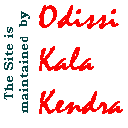|
|
|
 |
CLASSICAL DANCES OF INDIA |
|||
| The
genesis of the contemporary styles of classical dances
can be traced to the period between 1300-1400 A.D. India
offers a number of classical dance forms, each of which
can be traced to different parts of the country. Each
form represents the culture and ethos of a particular
region or a group of people. The most popular classical
styles seen on the Indian stage are Bharatnatyam of Tamil
Nadu, Kathakali and Mohiniyattam of Kerala, Odissi of
Orissa, Kathak of Uttar Pradesh, Kuchipudi of Andhra
Pradesh and Manipuri of Manipur. Besides these, there are
several semi-classical dances that contribute to the
plethora of Indian dances. Apart from the
classical dances, India is particularly rich in folk
idioms. Each area has its own special varieties, be they
martial, seasonal, ritual, sacrificial, celebratory,
instructional or talismanic. It can vary from village to
village, but they all share a common heritage of myths
and symbols. Some of the folk forms of India are Chauu
dance of Bihar, Garba of Gujarat and Bhangra of Punjab
and Banjara of Andhra Pradesh. |
||||
|